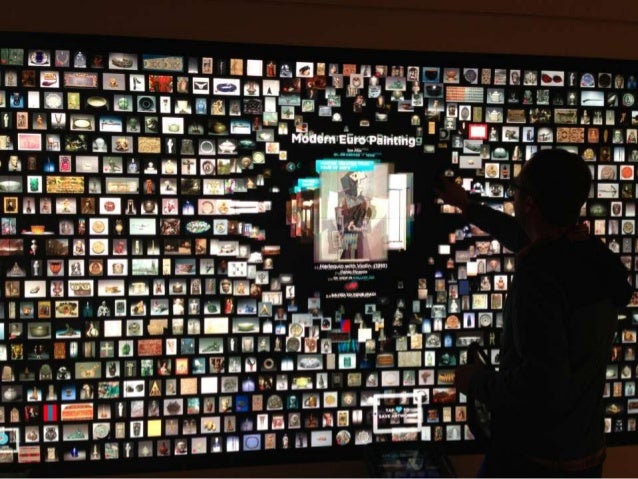Determining the economics of today’s art gallery system in the Western World can be quite difficult for the uninitiated. It’s crucial to remember that most, if not all, primary art sales take place in art galleries. When we talk about primary art sales, we refer to art being sold directly by the artist and not by fine art dealers and collectors, which can be considered a secondary market.
Being at the center of things, galleries have the power to set both the trends and the prices when it comes to which artists make it to the art world’s top levels. Unfortunately by the unmitigated virtue of the system, many high-end art gallery owners often manipulate the market, set the prices, and deal in insider information that would be considered illegal in other industries such as finance, for example.

How Galleries Set a Price on Art
Determining the amount of money a piece of art is worth is a complicated task and never as straightforward as it is with other commodities. There are, of course, some obvious elements such as the size of the artwork, complexity of the art-making process, as well as the labor intensity that went into it. However, there are also less visible and intangible factors like the aesthetics, artist’s reputation or notoriety, and current trends and demand. There’s also the important matter of art historical value that needs to be taken into consideration here.
Though seemingly similar, price and value in the fine art world are not the same things. While the price of an artwork is generally set by artists, gallery owners, and, to a lesser extent, by contemporary art collectors, it represents a cumulative number of all the factors considered at any given moment. The market value, on the other hand, takes a broader perspective, also taking into account the overall aesthetic of the piece, its originality, as well as its conceptual meaning and worth. As such, determining the value of an artwork will require an extended degree of knowledge in art history, connoisseurship, and the condition and status of the art market and art industry.
In a “perfect” free market, the price of any given commodity is publicly known and will go to whoever is willing to pay the highest bid. This type of system is great at matching supply and demand, thus setting prices that actually reflect the market value of that particular product or commodity. In reality, no market, regardless of industry, is truly free.
And when it comes to the contemporary art world, it’s anything but. Galleries tend to keep sales prices to themselves and will often choose to whom the artwork will go to — their preferred customers. In other words, the prices are not set by the market demand but by the high-end fine art galleries, while the buyers are more often than not, predetermined.
Traditional art galleries hold such a tight grip on the market that they go as far as not selling to known art collectors that will turn around and flip those works on the secondary market. One of the main reasons for this is that, once an artist’s work sells at an auction house, its price becomes public knowledge, and anyone who can afford to buy it.

Do Art Galleries Work in the Artists’ Favor?
It’s almost never a good idea to have an organization with a vested financial interest control the market. Yet, it’s plainly obvious that the traditional art market operates in such an unregulated environment. This will often lead to inefficiency in arbitrary pricing practices, shortages or surpluses in productions, and distortions in values. It can also make it more difficult for emerging artists without gallery representation to break out in the art world and make a decent living.
But if we were to ask a gallery owner why the traditional art market is as it is, they’ll probably say that the system is to work in the artist’s favor. Based on what we’ve talked about so far about gallery businesses, this might seem somewhat self-serving and rather misleading. Nevertheless, there can be something done to this effect. As pointed out, determining the value of an art piece requires extended knowledge in art history and greater understanding and experience in today’s art industry. It’s by correctly determining the value of an art piece that its price can be set accordingly.
Art dealers working in galleries tend to invest a great deal in their selected artists’ brands and cultivate their reputations. They help by showcasing and promoting their work at an exhibition, at contemporary art fairs, by giving career advice, and fostering relationships with the art collecting community, among others.
But often and regularly before any new work is presented, galleries will have already offered it to their preferred clients, be it museums as well as private or public collections. From the artist’s perspective, having their work be part of those prominent collections will indicate a quality signal that they’ve been endorsed by the art world. In turn, this will boost their artist brand and, by extension, their overall value.
One critical factor that most art dealers are fully aware of is that the perceived value is often arbitrary, while artist brands can be quite fragile in the real world. In fact, one of the worst things that can happen to an artist’s career is to be overhyped and overpriced, especially at the starting of their art career. Even if galleries have tremendous control over the market, this doesn’t mean that they can simply raise the prices haphazardly and expect that buyers pay what they ask. After all, their preferred clients are art connoisseurs themselves, and will not likely overpay. If a gallery artist is overpriced, galleries will much rather drop them than lower the price. Doing so will not only hurt the value of the artist but the credibility of the gallery as well.

New Horizons in the Digital Era
So, what is the future of the gallery system? According to Kavi Gupta, gallerist at Kavi Gupta Gallery in Chicago, “I would make a large ‘back office’ to help our artists with projects and museum shows and then work with the inventory to move it around the world, hopefully to public venues—both museums and new public exhibition programs, which cities would support in this hypothetical—in addition to art fairs. We spend much of our time promoting and producing projects for our artists that have little to do with our own white cubes, so it seems logical to build a business model around this that is basically an atelier focusing on digital media/promotion for this new era, and also substantial production of artist projects. We’d be more mobile, and freed up to do more for our artists.”
This is precisely what ARTDEX does for all of its artists and collectors. We help them archive all of their best work as well as all the work they’ve done since the beginning of their art career. Essentially, we offer a complete digital archive for art professionals to safely keep their work in a cloud storage environment. This makes it that much easier to document and preserve all art, while also showcasing, promoting, and celebrating the real people’s art that is over 99% of all artworks in existence and in the making.


![[Left] Kusama with her piece Dots Obsession, 2012, via AWARE, [Right] Yayoi Kusama (Courtesy Whitney Museum of American Art) | Source: thecollector.com](https://www.artdex.com/wp-content/uploads/2024/04/Left-Kusama-with-her-piece-Dots-Obsession-2012-via-AWARE-Right-Yayoi-Kusama-Courtesy-Whitney-Museum-of-American-Art-Source-thecollector.com--300x172.png)




